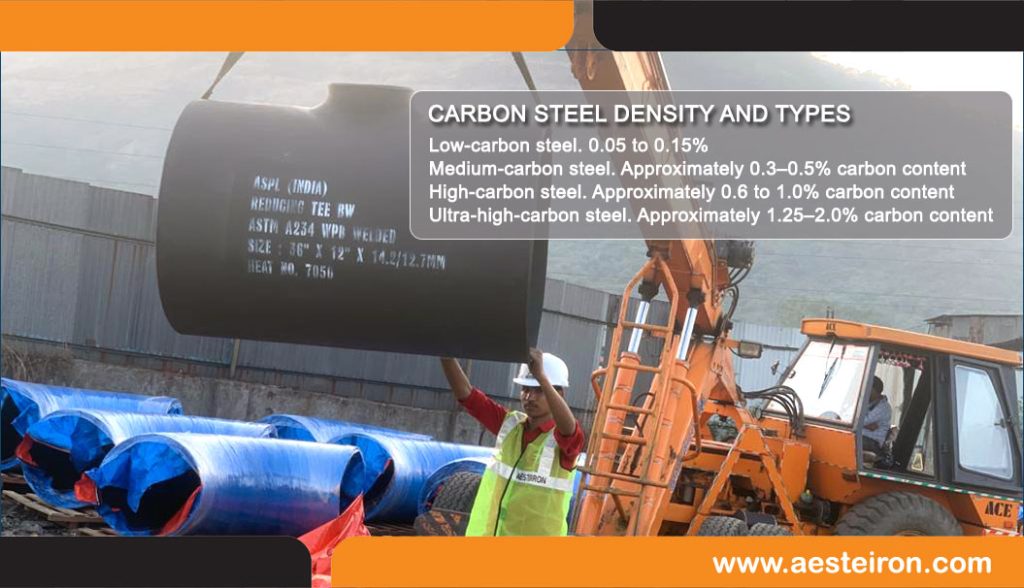
Introduction to Carbon Steel
Carbon steel is an alloy primarily composed of iron and carbon, typically containing between 0.12% and 2% carbon. This versatile material comes in various forms, each designed for specific applications. Known for its strength, hardness, and flexibility, carbon steel is a favorite among manufacturers across industries. Its ability to adapt to different environments and applications makes it indispensable in modern manufacturing processes.
The Importance of Carbon Steel Density
Carbon steel density plays a crucial role in engineering and manufacturing, impacting not only the weight of the material but also its toughness-to-weight ratio and dimensional stability. Understanding this density is essential for optimizing performance and ensuring structural integrity in various applications.
Factors Influencing Carbon Steel Density
- Carbon Content: The amount of carbon directly affects the density, influencing both the strength and ductility of the steel.
- Heat Treatment: Processes like annealing or quenching can alter the density by modifying the internal structure of the material.
- Temperature and Pressure: Extreme conditions can cause changes in density, particularly in high-stress environments.
- Grain Size: The microscopic arrangement of grains within the steel impacts its overall density and mechanical properties.
- Surface Treatments: Coatings and treatments applied to the steel surface can slightly modify its density and performance characteristics.
Measuring Carbon Steel Density
Carbon Steel Round Bars:
Formula for Density in KG per Meter:
Outer Diameter (OD) in MM × Outer Diameter (OD) in MM × 0.00623
Example: (80MM × 80MM) × 0.00623 = 39.872 Kg per meter.
Carbon Steel Pipes/Tubes:
Formula for Density in KG per Meter:
[Outer Diameter (OD) in MM – Thickness in MM] × Thickness in MM × 0.0248
Example: [(88.9MM – 3.05MM) × 3.05MM × 0.0248] = 6.49 Kg per meter.
Carbon Steel Plates/Sheets:
Formula for Density per Piece:
Width in MM × Length in MM × Thickness in MM × 0.00000784
Example: 6MM × 1250MM × 2500MM × 0.00000784 = 147 Kg per Piece.
How Density Impacts Carbon Steel Properties
Understanding the density of carbon steel is vital for assessing its numerous properties. Here are eight ways density affects carbon steel:
- Strength-to-Weight Ratio: Carbon steel's high density coupled with its strength allows it to maintain impressive load-bearing capabilities without adding unnecessary weight, making it ideal for aerospace and automotive industries.
- Corrosion Resistance: Although not as corrosion-resistant as stainless steel, carbon steel benefits from a natural oxide layer that offers some protection against environmental damage.
- Machinability: Due to its relatively soft nature compared to other metals like titanium, carbon steel is easier to machine and shape into complex designs.
- Thermal Conductivity: The density of carbon steel influences how well it conducts heat, which is critical in applications requiring efficient thermal management.
- Formability: High-density materials like carbon steel are more formable under pressure, allowing them to be bent or shaped into intricate forms.
- Impact Resistance: Certain densities provide enhanced impact resistance, making carbon steel suitable for high-stress environments.
- Weldability: The density of the material impacts its weldability, influencing how easily it can be joined to other components.
- Recyclability: High-density materials tend to be more recyclable, contributing to sustainable practices in manufacturing.
Conclusion
Anyone working with carbon steel should have a thorough understanding of its density, as it significantly impacts its strength, weight, and overall performance. Manufacturers and engineers can make informed decisions about which products to use based on their application requirements. By leveraging the right type of carbon steel, they can ensure the quality and reliability of their final product. Whether it’s for constructing bridges, building cars, or developing cutting-edge technology, carbon steel remains a cornerstone of modern industry.
PET Metalized Silver Thermal Lamination Film
Silver Lamination Film,Reflective Silver Pet Film,Metalized Pet Laminating Sheet,Silver Finish Pet Laminate
JIANGYIN HONGJU NEW MATERIALS CO.,LTD , https://www.hongjuspecialfilm.com
